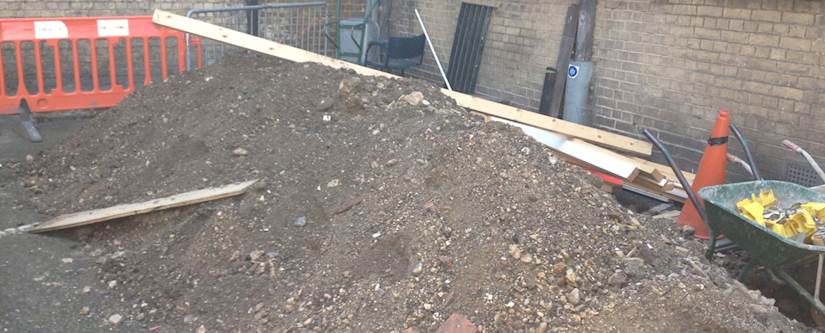
Trace Asbestos in waste soils – Can it go as Inert?
We've had a couple of instances very recently of trace levels of asbestos in waste soils resulting in significant muck away costs due to it being 'not inert', so we thought we’d share our thoughts and experience.
Let's deal with how the presence of asbestos can make a waste hazardous first because that's pretty straight-forward and comes down to either having more than 0.1% fibres in the waste mass or the presence of identifiable fragments. We're intending to cover the specific issue of 'identifiable fragments' in another upcoming blog, so let's park that for now and assume we are all happy that it is Non Hazardous.
It’s then a question of whether the material can be classed as Inert, which is established through the Inert WAC testing process. That Inert WAC testing process does not ask any questions about asbestos content as it is solely interested in establishing how the waste will ‘react’ once landfilled with other material and also long term risks to the water environment. So the presence of asbestos within a waste material at levels well below the Haz threshold, and in the case of both of our two recent examples at <0.001% (which for context, would be suitable for use for soils in a new residential garden) should not stop it being classed as Inert.
Straight forward yes? No. Because the guidelines are very clear that although we all have a duty of care, the final decision sits with the waste receiver. It’s a free market and if the tip doesn't wish to accept that material as Inert then that is their prerogative. The tips our clients were dealing with did not want to take it as inert, their argument being that even though the lab testing had found less than 0.001%, there was still asbestos in the sample and so could contravene their license conditions. So they wanted confirmation from their local Environment Agency office, as the regulator of the waste permitting system.
Our initial conversations with the EA were very helpful and confirmed our position; The only reason for a tip 'not to be allowed’ to take a material is if its specifically listed on their permit. Otherwise, if it's Non Haz it's Non Haz, and if it's Non Haz it is Inert if it passes that specific WAC test. But of course the tip wanted that in writing from their local EA office, and after the permitting agent was off sick their line leader just came back with a statement that they don’t have the resources to comment on specific issues ... I’m not sure we were too surprised at how that turned out ...? But let's not go there.
So there we are, at the mercy of market forces. The material had effectively been tainted by that first initial result and just couldn't recover. Far from ideal and not exactly the 'great result' we'd prefer to be blogging about. In both instances there just wasn't an economically viable alternative and the material went to the original tips but at the higher Non Haz rate.
What we’ve learnt from this: if an initial ground investigation has picked up traces of asbestos, the first thing to do is be absolutely sure those original samples directly relate to the material you are looking to remove from site, otherwise do an appropriate level of retesting. And if you really do have traces of asbestos fibres well below the Haz waste threshold in soils which pass the Inert WAC test, then start those conversations with local tips early!
Oh – and give us a call, we’d really like to help because the outcome of those last two jobs just really didn’t sit well with us!